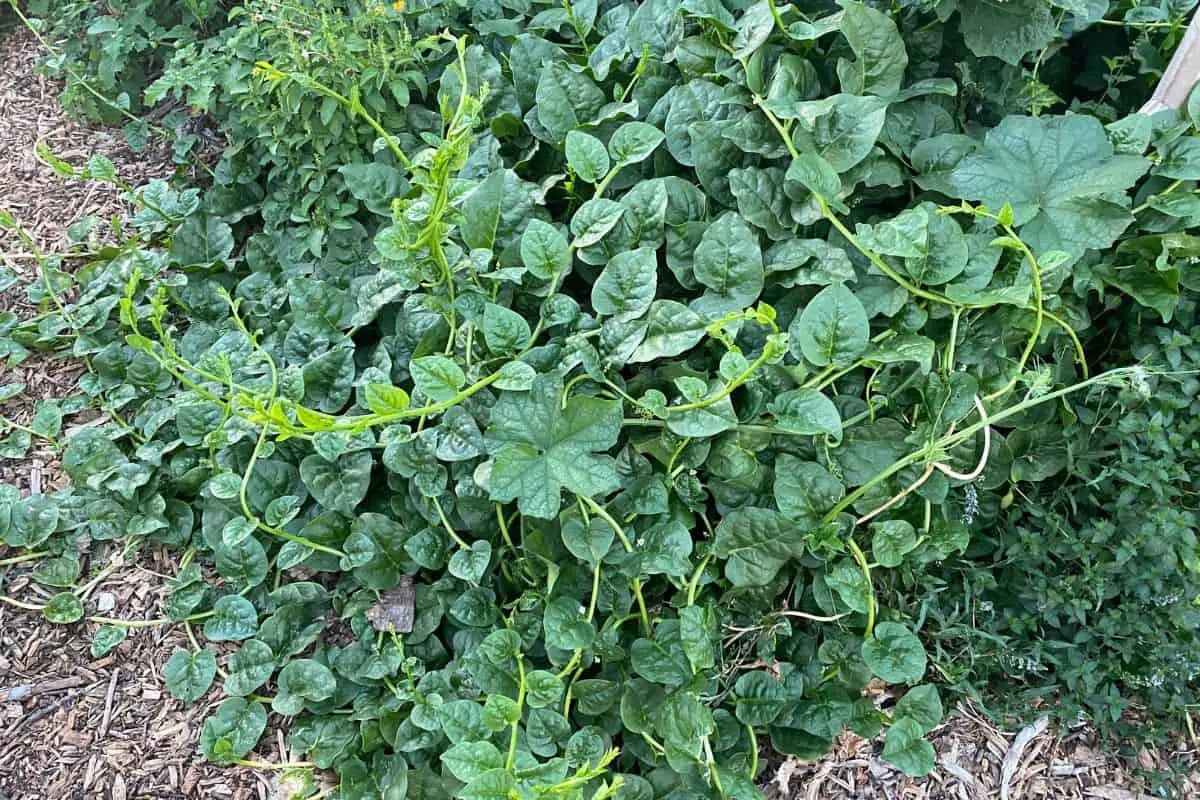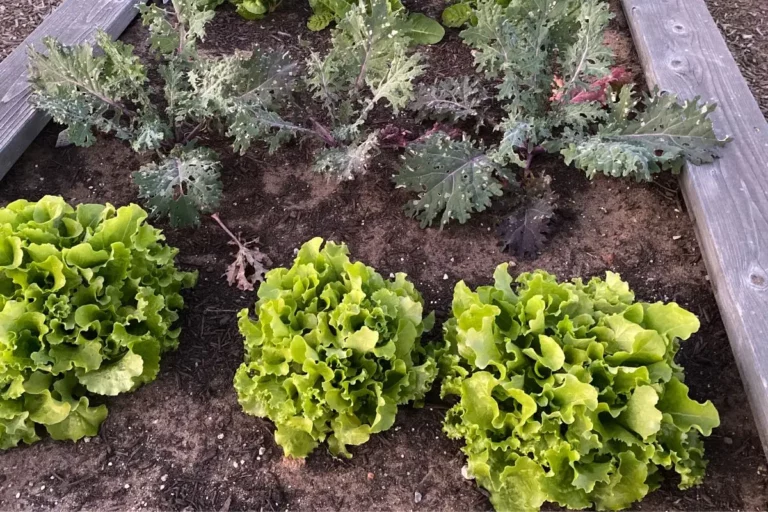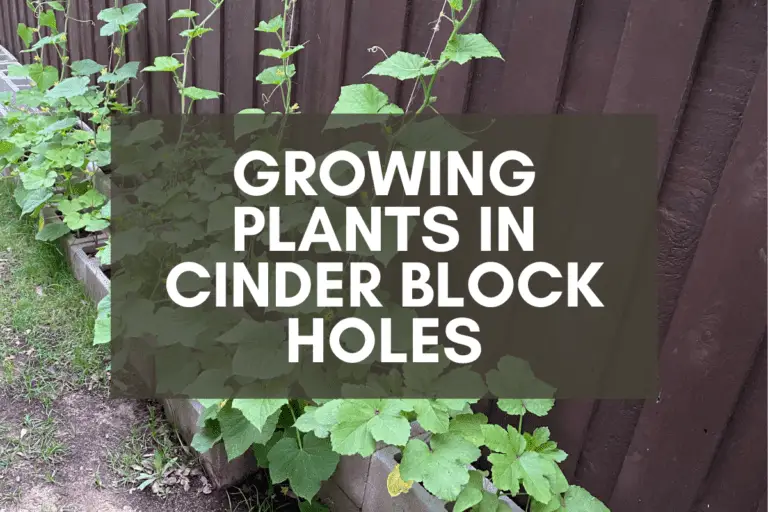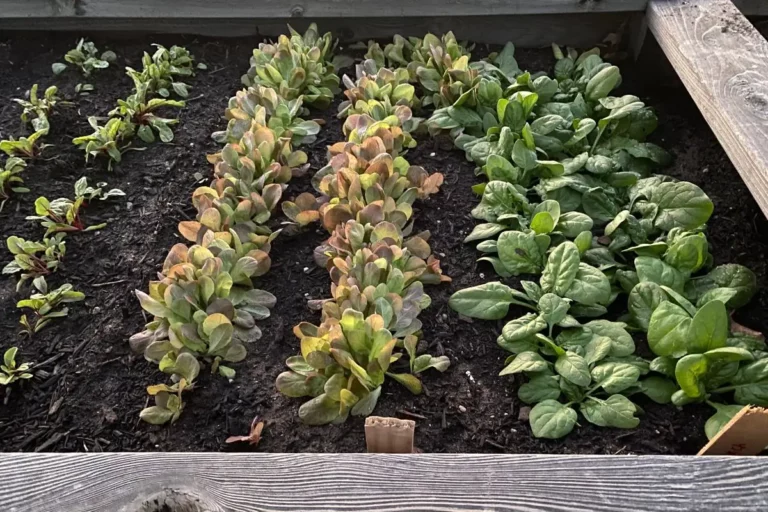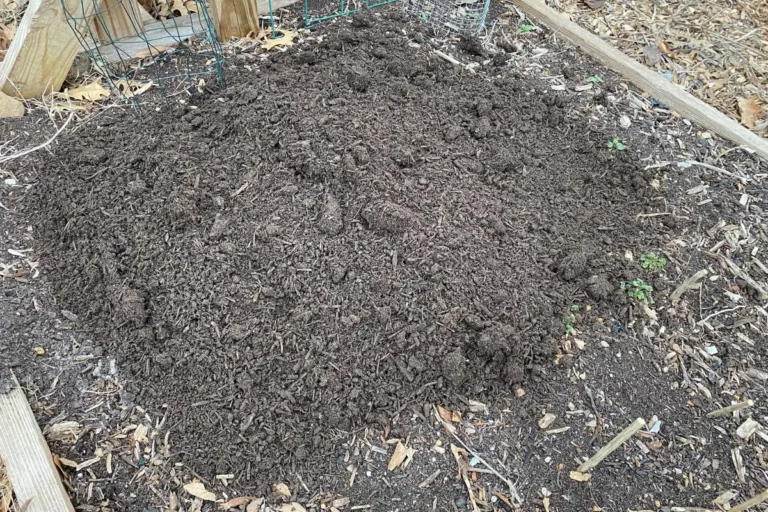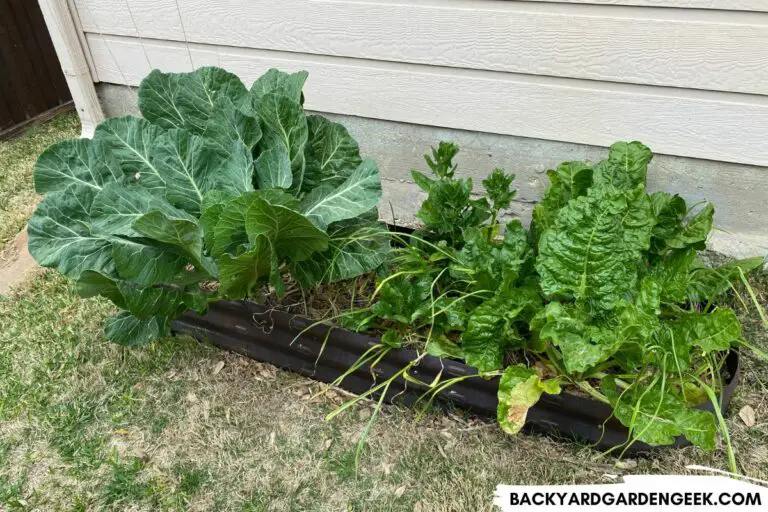23 Plants You Shouldn’t Grow in Raised Garden Beds
I’ve got 8 raised garden beds in my backyard plus an additional bed at my local community garden that I grow plants in throughout the year, so I’m a big fan of gardening in raised beds.
But have you ever wondered if there are any plants that shouldn’t be planted in raised beds? What should you avoid putting in yours?
Raised beds are not ideal for berry bushes, corn, grains, or plants that need lots of space such as loofahs, malabar spinach, pumpkins, winter squash varieties, and watermelons. Lemon balm, mint, tansy, and yarrow should never be grown in raised beds since they’ll spread uncontrollably.
As you can probably guess, there are many reasons why certain plant varieties don’t do well in raised beds.
But before I provide explanations for why I refuse to grow certain varieties in my raised beds, I’d like to share a more complete overview of plants that do better elsewhere.
Here is a list of plants that should not be grown in raised garden beds:
- Barley
- Bee Balm
- Blackberries
- Blueberries
- Bottle Gourd Squash
- Comfrey
- Corn
- Hops
- Lemon Balm
- Malabar Spinach
- Millet
- Mint (all varieties)
- Oats
- Raspberries
- Rice
- Rye
- Sorghum
- Tansy
- Tromboncino Squash
- Watermelon
- Wheat
- Winter Squash
- Yarrow
In addition to the plants mentioned above, here are some other varieties that you can definitely grow in raised beds but that might cause some headaches if you’re not careful about where and how you grow them:
- Artichoke
- Asparagus
- Broccoli
- Cantaloupe
- Cauliflower
- Okra
- Oregano
- Potato
- Romanesco
- Rhubarb
- Tomatoes (indeterminate varieties)
I’ve seen some bloggers suggest that you shouldn’t grow these plants in raised beds, but I entirely disagree.
As long as you know the pros and cons of doing so, you can decide for yourself whether it’s worth it to grow these plants in your raised beds.
Below, I’ll discuss the following so that you can make informed decisions about which plants you’ll want to grow in your raised beds:
- reasons why certain plant varieties don’t do well in raised garden beds.
- plants you should not grow in raised garden beds plus justifications for not doing so.
- plants you might grow in raised beds as long as you know the pros and cons ahead of time.
Now that we’ve covered a few of the basics, let’s get into the details of what you should consider before growing certain plant varieties in raised garden beds.

6 Reasons Why Some Plants Don’t Grow Well in Raised Beds
You might be wondering why the plants I’ve noted above shouldn’t be put in raised beds, but there isn’t a single reason for not growing them there.
Instead, there are several different reasons why these plants might cause you problems if you attempt to grow them in raised garden beds, so I thought I’d provide a brief breakdown of the problems you might experience if you decide to give it a try.
1. Some Plants Need to Be Planted in Rows or Clusters
When it comes to corn and grains (barley, millet, oats, rice, rye, sorghum, wheat), raised beds are simply not ideal.
These plants need space to grow, and certain varieties often do best when they’re planted in long rows or clusters.
Take corn, for instance.
Back when I knew little to nothing about growing corn, I once tried to grow it in a raised bed. The results were terrible. Total waste of time.
As I eventually learned, corn needs to be grown in blocks of 10, 25, or even 50 plants so that the plants take full advantage of windy days but also benefit from the pollination provided by other nearby plants.
Corn only matures properly if its pollen falls from the tassels down to the silks, which is why wind is essential for proper corn pollination. A few plants in raised beds won’t benefit from the pollinating power of block planting.
Before you grow any new plants for the first time in raised beds, you’d be wise to make sure they don’t require larger planting areas.
2. Some Plants Need More Space to Grow
Speaking of larger planting areas, some plants are going to completely take over if you plant them in raised beds.
Have you ever grown bottle gourds, loofahs, tromboncino squash, pumpkins, watermelons, or winter squash?
If you have, you’re likely well aware of just how much room those plants need to spread out as they grow.
Last year, I let a volunteer plant grow in the middle of the raised bed that I have over at the community garden. I had never seen a seedling like that, so I wanted to see what would happen as it matured.
As the weeks passed, the plant got large. Very, very large. It turns out that I had a bottle gourd (Lagenaria siceraria) growing in my garden bed. This plant, sometimes referred to as a calabash, was producing all kinds of runners plus huge roundish leaves.
I had 2 options to keep it from taking over the entire bed. On the one hand, I could just pull it out, but I didn’t want to do that because I wanted to see what its gourds would look like. On the other hand, I could train it to grow out of my bed and onto a nearby chain link fence.
Once I got permission from the head of the community garden, I did the latter. The plant went absolutely nuts once it got a hold of the fence, spreading in each direction for 15 or so feet and sending out vines all along the way.
The same thing happened with some loofah and tromboncino plants that we were growing in the community garden. The chain link fence became a plant battleground as calabash, loofah, and tromboncino fought for plant supremacy.
Long story short, keep these plants far away from their raised beds. They’ll make it impossible for you to grow anything else!
3. Some Plants Grow Best Directly in the Ground
Blackberries, blueberries, raspberries: These plants are best planted in the ground, not in raised beds.
The same goes for corn, grain, and all kinds of hops.
Can you grow these plants in raised beds? Of course! As long as you’ve got healthy soil, you can grow practically everything.
But this doesn’t mean you should do so.
Berry bushes will grow in containers and raised beds, but here in Texas, they grow amazingly well when planted in our nice native soil. There’s simply no need to grow them in raised beds or containers if you live in a region where they’ll thrive.
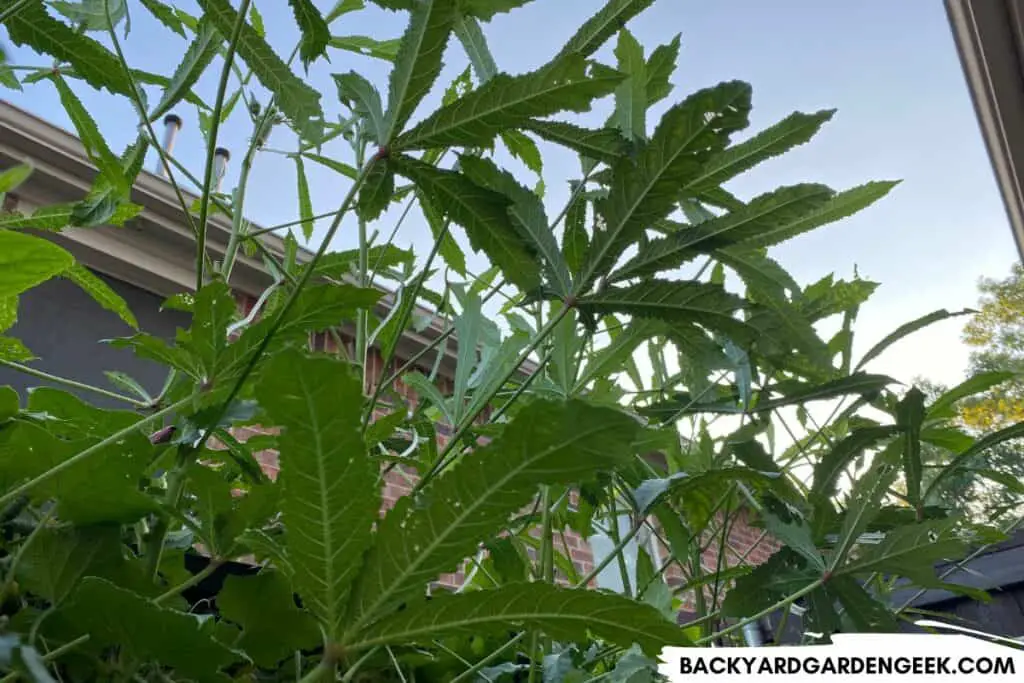
4. Some Plants Will Grow Too Tall
When I lived in New Jersey many years ago, I designed and built my first raised garden beds, which were 18 inches deep.
I had always grown tomatoes, so I obviously wanted to grow them in my raised beds. But I didn’t realize that my indeterminate varieties, when planted in soil that was already 18 inches off the ground, would cause quite a few headaches as the plants matured.
I didn’t want to top the plants, so I let them grow, but they soon outgrew my supporting structures.
In fact, they grew so tall that I eventually had to drag a ladder out whenever I wanted to harvest the mature tomatoes. It was fun at first, then a headache later on.
You might see something similar if you plant malabar spinach in a raised bed or even okra plants.
As long as malabar spinach has something to grasp, it’ll grow up until its furthest branches are out of reach, making it difficult to harvest.
Okra can do the same. I grew some in a concrete block garden bed last year, and as time went on, I had to stand on top of the concrete blocks to reach the pods. Thankfully the concrete blocks provided plenty of stability; otherwise, that would have been another headache!
5. Some Plants Will Grow Uncontrollably
Let me say this as clearly as possible: Never grow mints in raised beds. Or even near raised beds. Or anywhere in your garden for that matter with the exception of a container or pot that’s been placed far away from your other veggies.
If any little bit of mint finds its way into your raised bed, it’ll grow and spread and take over everything.
Malabar spinach will do something similar (although not as extreme). To some extent, the same can be said of bee balm, comfrey, lemon balm, tansy, and yarrow. Even oregano can get a little out of hand.
I’ve got some oregano in a raised bed right now. It’s much more manageable than mint and lemon balm, but it really wants to keep spreading.
I can only imagine how quickly mint would spread if it found a way to get in my beds!
6. Some Plants Take Up Too Much Space
As I noted earlier, some plants need more space to spread out and grow. Others will do just fine in raised beds, but they’ll take up space you might have otherwise devoted to other plant varieties.
Bottle gourds, loofahs, pumpkins, tromboncinos, watermelons, and winter squash: Obviously, these will spread out.
But berry bushes can as well over time. Malabar spinach will get unwieldy as it grabs onto and wraps itself around all nearby plants. And broccoli and cauliflower plants can take up a surprising amount of space, which means you won’t have much room in your raised beds to grow other plant varieties.
What Plants Should You NOT Grow in Raised Garden Beds?
Here’s a quick overview of the plants that I’d never grow in raised garden beds, including a short description of why I’d never do so.
This doesn’t mean you can’t grow these plants in a raised bed. You can grow practically everything in a raised bed as long as it’s got good soil in it.
These are simply guidelines for why you might want to avoid putting these plants in your raised garden beds.
1. Barley
Barley (Hordeum vulgare) grows best when it’s grown in long lines and cool soil.
Like most grasses, you’ll need plenty of space to plant enough barley for a substantial harvest. Raised beds aren’t going to give you this space. Don’t even consider it!
2. Bee Balm
Bee balm (Monarda) grows via underground rhizomes, which means that this plant is going to grow quickly and spread out from its original location. If you put it in a raised bed, there’s a good chance that you’re going to have to cut it back every 1-2 years if you want to use that raised bed to grow any other plants.
Best to keep this mint cousin away from your raised beds. It just isn’t worth it!

3. Blackberries
I live in North Texas, and blackberry bushes absolutely love our weather. There’s no need for containers or raised beds because the bushes will thrive if they’re planted and cared for properly.
The problem with bushy plants is that, well, they’re bushes. This means that they’re going to take up quite a bit of your raised bed if you decide to plant one there.
I recommend not doing so. If you live in a region that supports blackberry growth, go ahead and find some native soil to plant them in. Save the raised beds for your smaller plants.
4. Blueberries
Much like blackberries, these bushes can grow quite large.
I’ve seen them grown in large 40-gallon containers successfully, but 1 plant took up an entire container, so you can imagine what these bushes will do to your raised beds if you plant them in there.
5. Bottle Gourd Squash
Sometimes called calabash plants, bottle gourd squash will grow large. Very large.
I was fortunate when I grew mine because I trained the stem to grow up out of the raised bed, climb horizontally along my trellis, then stretch across a small gap to wrap itself around the nearby chain link fence.

For the part of the plant that grew out of my raised bed, I trimmed off all of the leaves since they were huge and blocked sunlight from reaching my other plants. But when the plant made its way to the chain link fence, I let it grow crazy and grow as it wished to grow.
Long story short, never grow this in a raised bed unless you’re okay with it taking over everything.
6. Comfrey
Comfrey (Symphytum officinale) is a perennial flower that adds lots of color to a backyard garden.
But it’s an aggressive, fast-growing plant with deep tap roots and thick, extended root systems.
The problem with comfrey occurs if you ever decide that you’d like something other than comfrey in your raised beds. You’ll need to remove every single piece of plant to ensure it won’t come back, or you’ll have to resort to more drastic chemical solutions, which are often not great at all when it comes to soil you’d like to garden in.
Much like aggressive-growing mint plants, comfrey is great for containers, so keep this plant out of your raised beds.
7. Corn
Corn needs to be grown in blocks since the plants do best when there are plenty of silks to catch all of the pollen that drops from the tassels.
If you attempt to grow corn in raised beds, as I did many years ago, you’re going to be super disappointed with the results.
You should instead relocate the corn elsewhere and save your raised garden bed space for other plants that’ll thrive there.
8. Hops
I’ve never personally grown hops, but I know quite a bit about how these plants grow.
Simply put, they can get quite large, so raised beds are an inappropriate place to grow them unless you’ve got some tall ladders handy for all the climbing you’re going to be doing in the coming months.
You need much more space if you’re interested in growing your own hop plants. Please don’t put them in raised beds.
9. Lemon Balm
Much like bee balm, lemon balm (Melissa officinalis) will grow aggressively via its underground rhizome system.
It’s a pretty plant, and it was used as a medicinal herb for centuries. But it’s a cousin of mint, which means it’s a rather aggressive grower. If you’re not careful, this plant can take over your raised beds, so keep it far from them.
If you want to grow lemon balm, plant it in a nice container that’s located at least 15-20 feet away from your garden. Don’t let it go to seed, or else you might find little seedlings popping up in unwanted places.
10. Malabar Spinach
I’ve grown malabar spinach in a raised garden bed, but here’s why that’s going to cause you some headaches.
Malabar spinach is an incredible grower, even in very hot summer months, but that capacity for growth means that it’ll twist itself around just about everything.
I found a volunteer plant in my bed at the community garden a few years back, and I decided to let it grow.
I’m glad I did because I had never grown malabar spinach, but I learned over time that that plant would grab everything–my trellis, my tomato plants, the nearby fence.
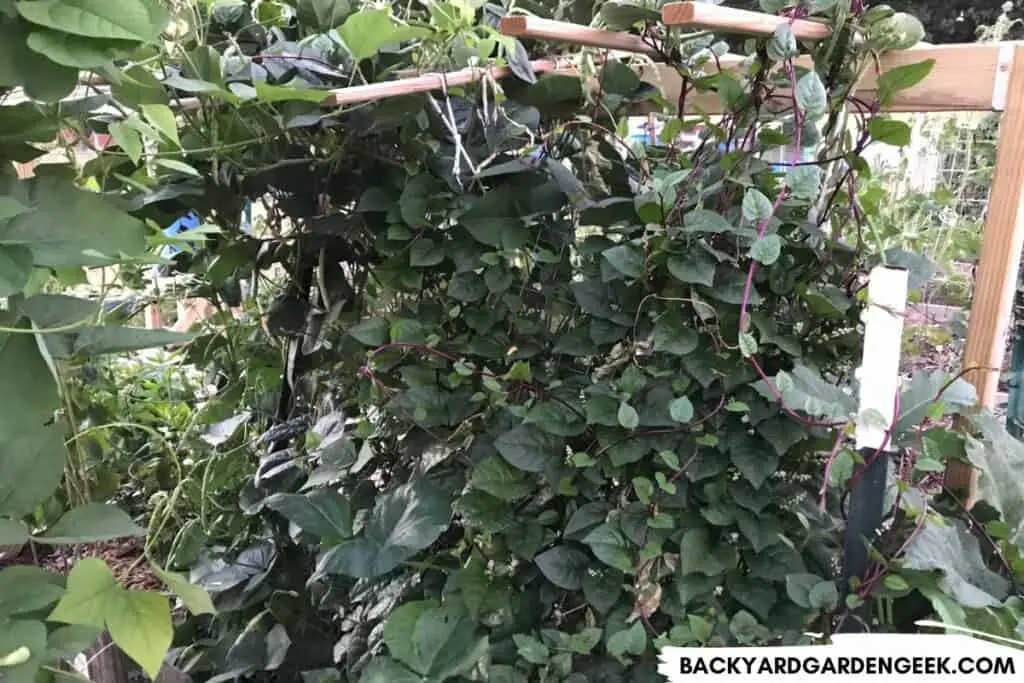
In other words, you can grow malabar spinach in your raised beds, but you’re better off growing it in an area where it won’t grow so aggressively.
11. Millet
Like other cereal grain crops, millet is a member of the Poaceae grass family, and it does best when planted in large quantities.
Can you grow this plant in your backyard? Sure, it’ll do just fine in raised beds.
But unless you’re experimenting or have a large-ish property, I’m not sure why you’d let millet take up valuable space in your raised beds.
You’re better off setting aside 100+ square feet of native soil for any millet experiments you might be interested in attempting. Check out this growing guide published by the University of Missouri if you’re interested in learning more about millet.

12. Mint
Never grow mint in a raised bed. Ever.
If you let mint grow in your raised beds or even in your native soil, you’re never going to get rid of it. It’ll likely outlast you.
I like mint plants, but I only ever grow them in containers. I often keep those containers on top of my concrete patio, and I don’t let them go to seed.
Simply put, I’m not going to risk any mint getting into my garden.
13. Oats
I doubt anyone’s planning on growing oats (Avena sativa) in raised beds anytime soon, but I feel compelled to list it here.
Oats are good cover crops and great livestock feed, and they can be composted or tilled into the soil, but you’ll need lots of space to grow them. Raised beds aren’t going to be an ideal growing area unless you’re just interested in playing around at growing a few oat plants. In that case, go for it!
14. Raspberries
Raspberry plants are often unwieldy and need supports to thrive, which is why I don’t recommend putting them in raised beds. Much like blackberries and blueberries, they’ll do best if you can find a good spot on your property and plant them in your native soil.
However, there are a few small bush varieties that you can grow in containers or your raised beds. The hybrid variety known as “Strawberry Shortcake” seems perfectly suited for containers or raised beds since it grows into a compact bush.
In other words, do some research before you put a raspberry bush in your raised beds and be sure to pick the most compact variety possible.
15. Rice
You probably know this already, but rice is in no way suited for raised garden beds.
It’s also the kind of plant that won’t thrive in many growing regions because it needs very specific growing conditions, which is why you’ll only really find it in several U.S. states (Arkansas, California, Louisiana, Mississippi, Missouri, and Texas) as well as Brazil and various countries in Asia (Bangladesh, China, India, Indonesia, Myanmar, Pakistan, Philippines, Thailand, and Vietnam).
16. Rye
Rye isn’t all that difficult to grow since it tends to do fine in less-than-ideal soils and in colder weather as well. But I wouldn’t attempt to grow any in raised garden beds. That seems like a waste of ideal gardening space.
For rye, choose a large area in or near your garden and broadcast your seeds there, spreading a thin layer of soil on top of them.
Many people sow rye by the acre, but you can grow it on a smaller property if that’s something you’re interested in doing. Personally, that’s not my thing. I’d rather save my space for veggies, not grains.
17. Sorghum
A member of the grass family Poaceae, sorghum is often fed to livestock, but it’s also grown as a food source in many parts of the world.
Sorghum is interesting to look at as it matures through its growth stages, so you might want to try to grow a few for aesthetic purposes, but certainly don’t fill your raised beds with it.
If you think you might like to grow a few plants in your backyard garden, just remember that they can grow up to 8 feet tall, so you’ll want to plant them in an area where they won’t block out the sunlight from other nearby plants.
18. Tansy
Much like bee balm and lemon balm, tansy spreads through rhizomes, but it’ll also produce seeds that are spread further by wind, animals, and even people.
I think tansy plants are pretty, but I’m not going to introduce one into my raised beds for fear that it might get too aggressive and start taking over my available garden space.
19. Tromboncino Squash
Last year at the community garden where I volunteer, we grew a few tromboncino squash plants along a chain link fence.
Little did we know that those plants would take over the fence, then spread at least 15-20 feet into the nearby lot.
On the one hand, this was pretty cool since the plants produced dozens of tromboncino squash. On the other hand, we had no idea that they would spread as aggressively as they did.
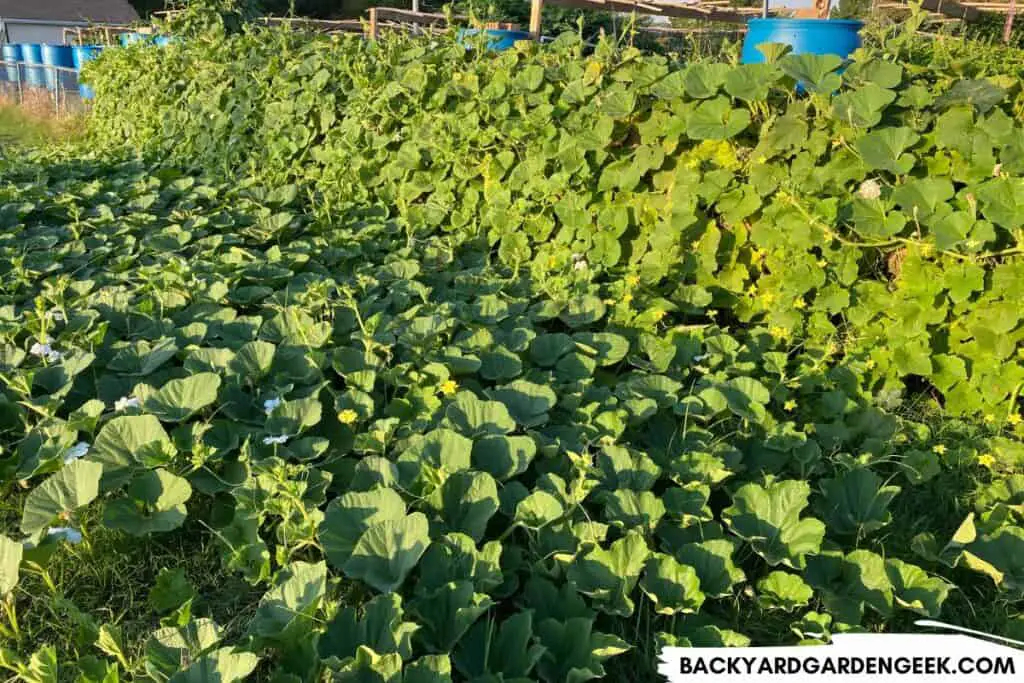
You certainly don’t want to plant these in a raised garden bed unless you’ve got a sturdy trellis system and the space to grow them.
I’m actually considering growing a single plant in one of my raised beds, but that’s only because I’ve purchased and installed cattle panels that’ll provide all kinds of support as the plant grows.
If you don’t have a similar setup, you should avoid growing tromboncino plants in your raised garden beds.
20. Watermelon
This seems like a no-brainer, but watermelons need room to grow and spread out.
And I’m not talking about a few feet in either direction since it’s entirely possible that a single watermelon plant could take up 15-20 square feet.
Given the amount of space they need and their tendency to take over, I’d grow these plants elsewhere on my property, not in my raised beds.
21. Wheat
You can definitely grow wheat in a raised garden bed, but here’s the thing about this grain: If you want enough to make the harvest worthwhile, you’re going to have to plant lots of it.
Even if you cram 20-25 plants into a single square foot of soil, you’re going to need quite a few of these square feet to produce a decent amount of wheat. Personally speaking, I’m unwilling to make room in my raised beds for this grain.
If you’d like to give it a try just for fun, then go ahead and plant some in a raised bed. But if you’re serious about growing wheat for personal consumption or commercial purposes, you’ll need to give some serious thought to how much space it requires and plan accordingly.
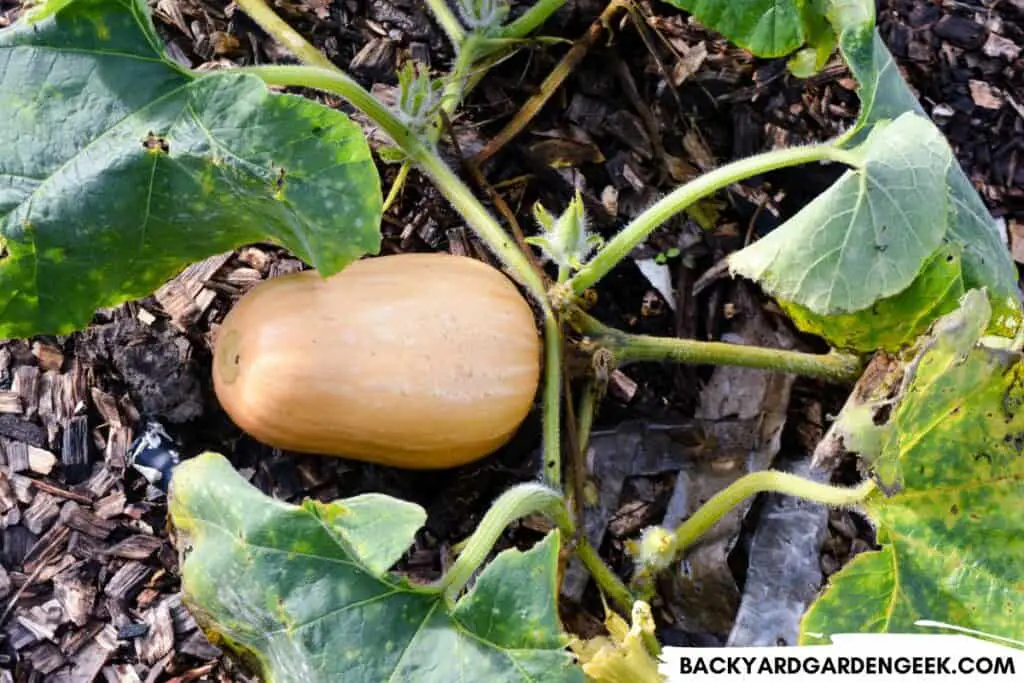
22. Winter Squash
Unless you’re planting very compact, bush varieties of winter squash, you’re going to need a lot of room for your plants, probably around 10-15 square feet (but maybe more).
You can technically plant them in raised beds, but if you do so, you should plant them near the edge and let the plant spill out of the bed and continue growing elsewhere.
Better yet, don’t plant them in your raised beds at all. Pick a location on your property that gets at least 6 hours of sunlight, then plant them and mulch heavily all around the plant as it develops. The mulch will help retain water while also keeping weeds at bay.
Just don’t plant one of these varieties in the middle of a raised bed. If you do that, it’ll take over all available planting space.
23. Yarrow
Much like tansy, I have no interest in introducing its cousin yarrow into my garden since it’s another one of those aggressive growing plants.
It’s a pretty plant, and it’ll attract beneficial bugs to your garden, but the pros don’t outweigh the cons. I might consider growing yarrow in a container some day just to see what that’s like, but I won’t let it near my garden.
Are There Any Other Plants to Avoid Growing in Raised Beds?
The 23 plant varieties I’ve noted above are those plants that, almost without exception, I’ll never grow in my raised garden beds.
But what about the other plants noted at the top of this article? Can they be grown in raised beds?
Here’s a handy table that summarizes my feelings about those plant varieties:
| Plant | Recommendation |
|---|---|
| Artichoke | Artichokes can grow up to 6 feet wide and live for years. They’ll do just fine in raised beds, but they’ll take up lots of space. |
| Asparagus | You can easily grow asparagus in raised beds, but you’ve got to dedicate an entire bed to them…for years. If you’re okay with that, go for it! |
| Broccoli | Broccoli will take up roughly 2-3 square feet per plant, but they do wonderfully in raised beds. |
| Cantaloupe | Only grow cantaloupe in raised beds if you can grow them up a trellis. Just remember to support the melons as they mature! |
| Cauliflower | Much like broccoli, these will take up space but are great additions to raised beds. |
| Okra | Okra can grow 6-10 feet tall, so consider the height of your raised bed if you’re interested in growing okra in it. |
| Oregano | Easy to grow in raised beds. Just know that it’ll spread over time, so you’ll have to keep cutting it back. |
| Potato | Don’t believe anyone who says not to grow potatoes in raised beds. These plants thrive there as long as you pull away soil at first, then mound it as the plant matures. |
| Romanesco | Perfectly fine for raised beds, but it’ll take up 2-3 square feet of space. |
| Rhubarb | Same as broccoli and cauliflower. It’ll do great in raised beds but needs enough space to thrive. |
| Tomatoes (indeterminate) | Tomatoes love raised beds, but indeterminate varieties will grow and grow. Pay attention to the depth of your beds and make sure you’re able to support them. |
Of the plants listed above, both the biggest mistake that I’ve made as well as my biggest success had to do with indeterminate tomatoes.
Here’s the mistake: Back when I lived in New Jersey, I built raised beds that were 18 inches tall (45 cm). I then planted indeterminate varieties in them, not really thinking about how tall they’d grow.
A few months later, they had outgrown my tomato cages as well as the stakes that I had tied to those cages.
In fact, they grew so large that they started toppling over because I could no longer support them. I also had to drag a ladder out to my plants every other day to harvest the tomatoes that were growing toward the tops of each plant.
Simply put, it was a headache.
But fast forward a few years, and things turned out very different. After I moved to North Texas, I wanted to grow more indeterminate tomatoes in my raised beds, but I had learned from my earlier experience.
What I did this time around was to make sure that there was some kind of supporting structure above the raised beds so that the tomatoes could have support as they took off.
The first year, I tied twine from a garage overhang to a nearby fence, which created a pergola-like effect above my beds. The year after that, I installed cattle panels that stretch from one raised bed to another raised bed.
In both years, I had an absolutely amazing harvest. The plants took off, but even after they were 7-8 feet tall, they had support to keep growing.
They even started growing horizontally along the twine and cattle panel, creating an amazing tomato canopy so large that my family and I could even walk under it! This made harvesting the tomatoes incredibly easy.
I had to battle some invasive pests along the way, but I’ve got lots of experience doing so, which made the problems easier to manage.
If you’re interested in my pest management strategies, you can get a pretty good overview of what I do by reading these articles:
- 11 Destructive Ways That Aphids Harm Plants
- How Can I Make Neem Oil More Effective? My 10-Step Process
- What Plants Do Spider Mites Like, and What Do They Hate?
- Will Aphids Go Away on Their Own? 9 Things to Know
- Will Neem Oil Kill or Repel Ants? All You Need to Know
Most importantly, once I figured out exactly how many tomato plants I needed to feed my family, I was able to maximize my growing space so that I didn’t grow too many of any one variety.
One final thing: If you’re building or installing raised beds for the first time, you can save a lot of money by putting compostable items in the bottom of your beds, then filling them up with lots of easy, cheap materials you can collect around your house and yard.
When I do this, I save both time and money, and I also ensure that my raised beds drain properly.
Long story short, if you know which plants to avoid putting in raised beds and which need extra care, you’ll be more than likely to avoid the mistakes I’ve made and to reserve your raised garden beds for the very best plants for you and your family.
Happy raised bed gardening!
Additional Reading
If you’ve enjoyed reading this article about my experience with raised beds, I’d encourage you to learn more so that you can build or install the best raised beds possible in your backyard.
Here are some related articles:
